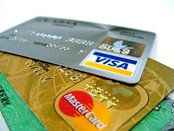 Whether you’re trying to buy a home, looking to refinance or hoping to get a lower interest rate on an automobile loan - your credit score matters. Clients often ask me how they can improve their scores and the answer is the same regardless of which stage of life you’re in. 1) Increase Your Limits This is pretty easy to do, yet most clients don’t realize it. Here’s how it’s done: Call up your credit card company (all of them) and simply ask them to increase your limits. Some will simply increase it without any hesitation, but often this method produces only a minimal increase. When they say they’ll increase your limit by $2,000, tell them you want it upped by a significantly greater amount. What’s that amount? I recommend something unlikely to be granted- say 10-20 times your current limit. The point here is that they’ll type in your request, which will likely to be denied, and then give you the maximum increase allowed by their computation. Why? This will improve your credit to debt ratio. The basic tenet here is that your credit score is positively impacted when you increase your credit to debt ratio. Here’s an example: You have a $15,000 limit on your credit card. You carry a $3,000 revolving balance on said credit card. Your credit to debt ratio is: $3,000 ÷ $15,000 = 0.20 or a 20% ratio. By adding all your limits and debts and using the above equation, you can determine your ratio. So, even with not paying your debt down, increasing your credit limits by making a few phone calls will improve your score and cost you nothing. Even if you pay off all your cards every month, your score will increase still if you increase your credit limits. Having the ability to borrow more but not doing so helps your score. 2) Don’t Close Old Credit Card Accounts If a card is paid off and you don’t use it anymore, just shred it but do not close the account. Again, you want to keep your credit to debt ratio low. Having that credit line but keeping a $0 balance only helps. Further, the longer you have had a credit card open, the better for your score. 3) Pay Off All Cards Each Month or as Much as Possible Duh, right? Everyone understands this, but I put this point here to again discuss your credit to debt ratio. Larger credit limits combined with less debt equals a better ratio- simple! 4) Spread Your Credit Card Debt Out If you already have several cards, I don’t recommend opening another account, but you don’t want to over utilize any of your cards. You should use no more than 30% of a card’s credit limit and of course, the less the better. 5) Don’t Open a Bunch of Cards While you want to work on decreasing your credit to debt ratio, this will actually hurt your score. 6) Pay Your Bills on Time Everyone knows this, but if you have missed a payment make sure you get current on those bills. Use these strategies and your score will go up. I’ve seen it happen both for myself and clients. If you’d like to know more about other strategies that can help you establish a strong financial foundation, check out our Financial Fitness program. FinFit is built to help our clients do just that!  As a financial planner, when a potential client comes to me with money to invest they often ask, “How should I start investing my money?” They know that they need to invest and have extra capital on hand to do so, but they’re putting the cart before the horse. Before even speaking with them about their risk tolerance, current investments, potential strategies for future investing etc. I always ask, “How much is in your emergency fund?” The answers can range from “What’s an emergency fund?” to having hundreds of thousands in a savings account. But more times than not, they don’t know exactly how much they should have in savings. An emergency fund is a savings account dedicated to bailing you out when unforeseen financial troubles arise. This fund is for repairing your HVAC unit, fixing your car, unexpected medical bills, and especially loss of wages. The emergency fund shouldn’t be so small that you aren’t able to cover a financial crisis without going into debt; but not so large that you have too much capital allocated in cash. General guidelines for an emergency fund say it should be around 3 months of expenses for two incomes, 6 months of expenses with one income- for both single and married investors. This is a baseline, but your Emergency Fund should be dictated by your individual circumstances. You and your financial planner should collaborate to determine the amount that is right for you. Once the proper amount is determined, your emergency fund should be moved into a high yield savings account. Most of us keep our savings at a big bank and receive terrible interest rates for parking our money there. While it may not seem like a lot of extra money, going from an account producing 0.01% interest vs. 1.0% interest just makes sense. Why not let your money earn the most it can for you? For example, say you have $10,000 in your Emergency Fund: Interest Rate Amount You Earn/Year Bank A 0.01% $10 Bank B 1.0% $100 I know, this is not a huge difference, right? But over 10 years, you have received $900 more by utilizing Bank B. While you will have to pay more in taxes with Bank B, you will still come out well ahead. I encourage you to look at the current return on your savings account, then go here to compare it to other options available. You may be pleasantly surprised what this simple move can do to increase your earnings on the money you have already saved. |
Archives
April 2024
Categories
All
|
 RSS Feed
RSS Feed